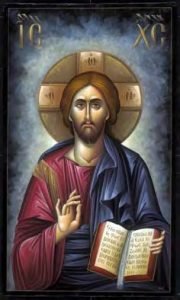 The epistle of James was known by Origen’s time, but we do not know when it began to receive canonical status. It is not in the Muratorian list, and Eusebius places it among the disputed books. The Lat Claromontanus list includes it, but the African Canon of 360 does not. In the later part of the 4th century it won acceptance in the West through Jerome, Augustine and the councils of Hippo and Carthage. In the Greek church of the same period it found a place in the canons of Cyril of Jerusalem, Athanasius and Gregory Nazianzen. This makes it evident that various Fathers of the Church were the first to list the books that they felt were truly inspired and therefore to be contained within the Canon of the New Testament.
The epistle of James was known by Origen’s time, but we do not know when it began to receive canonical status. It is not in the Muratorian list, and Eusebius places it among the disputed books. The Lat Claromontanus list includes it, but the African Canon of 360 does not. In the later part of the 4th century it won acceptance in the West through Jerome, Augustine and the councils of Hippo and Carthage. In the Greek church of the same period it found a place in the canons of Cyril of Jerusalem, Athanasius and Gregory Nazianzen. This makes it evident that various Fathers of the Church were the first to list the books that they felt were truly inspired and therefore to be contained within the Canon of the New Testament.
The evidence for the early knowledge of Jude is better than for James. Jude was known by the author of 2 Peter, by Polycarp, and by Clement of Alexandria. It appears in the Muratorian Fragment. However, Origen was aware that there were doubts about it, and Eusebius placed it among the disputed books. Its acceptance in the latter part of the 4th century followed a pattern similar to that of James. But Jude did not receive final acceptance by the Syrian church, and one of the canonical lists adopted by Trullo II (692) indicates uncertainty about its status.
The two shorter Johannine epistles were not cited frequently by Christian writers, probably because of their relatively insignificant contents. Toward the end of the 2nd century, Irenaeus cites 2 John, but there is no evidence for the circulation of 3 John in the 2nd century. The Muratorian Fragment lists two Johannine letters (1 and 2). Origen accepted a short epistle by John and said that perhaps John left two more epistles, although their true authenticity was denied by some and that all together they totaled no more than 100 lines. A century later, Eusebius listed 2-3 John among the disputed books, and a continuing dispute about these epistles is witnessed in the North African Canon of 360. Ultimately, like the other disputed catholic epistles, they were accepted in the Latin and Greek churches in the late 4th century, but not fully in the Syrian church.
Of all the catholic epistles, 2 Peter has the poorest record of acceptance. There is no clear reference to the epistle before the time of Origen who says that Peter left “one acknowledged epistle and possibly two, although this is doubtful.” Disputes about 2 Peter are recorded by Eusebius and are implicit in the North African Canon of 360. Jerome accepted it, although he knew there were doubts. It was accepted at the same time as were the other disputed catholic epistles.
The history of our Sacred Literature,
I believe, is truly fascinating.
